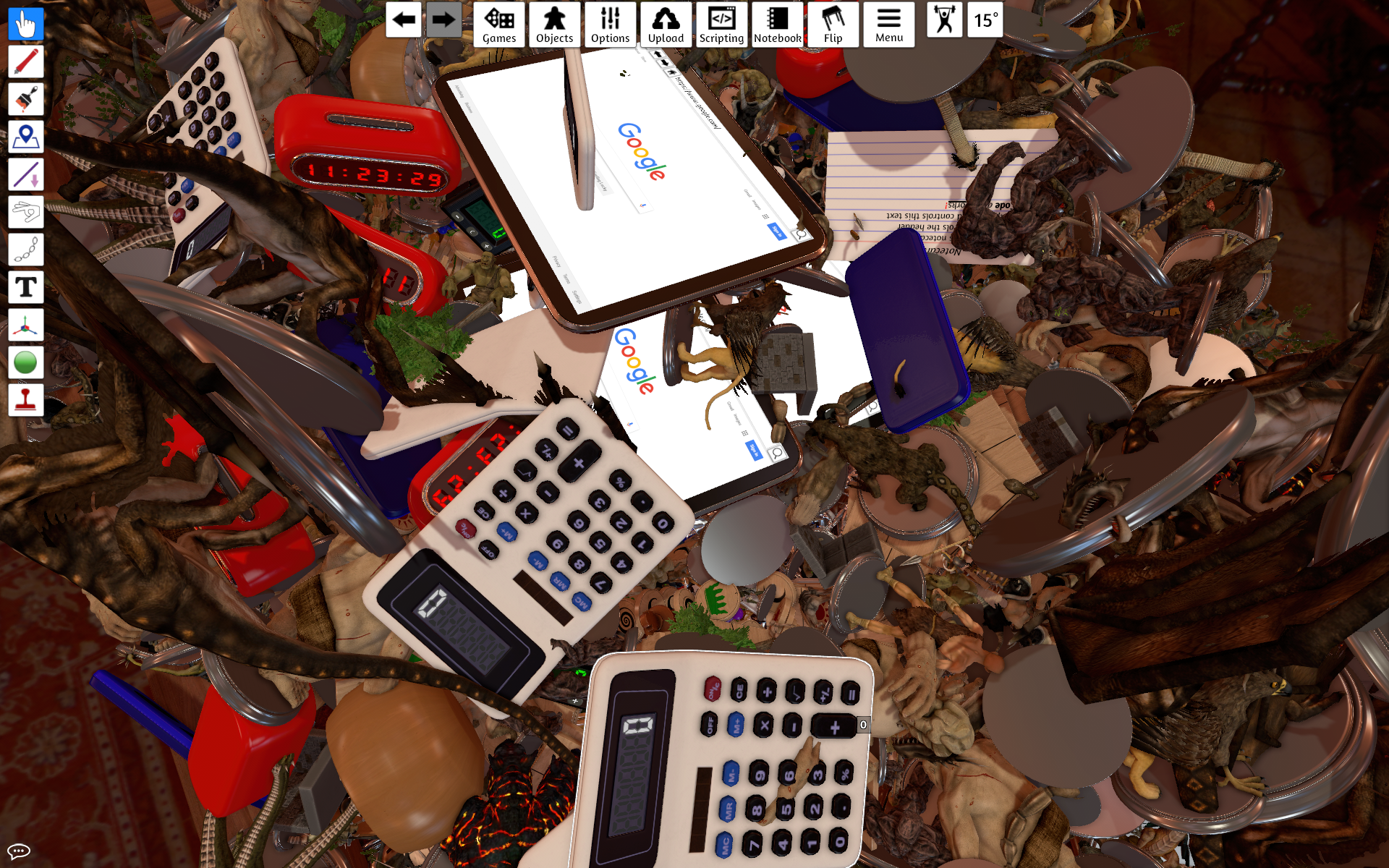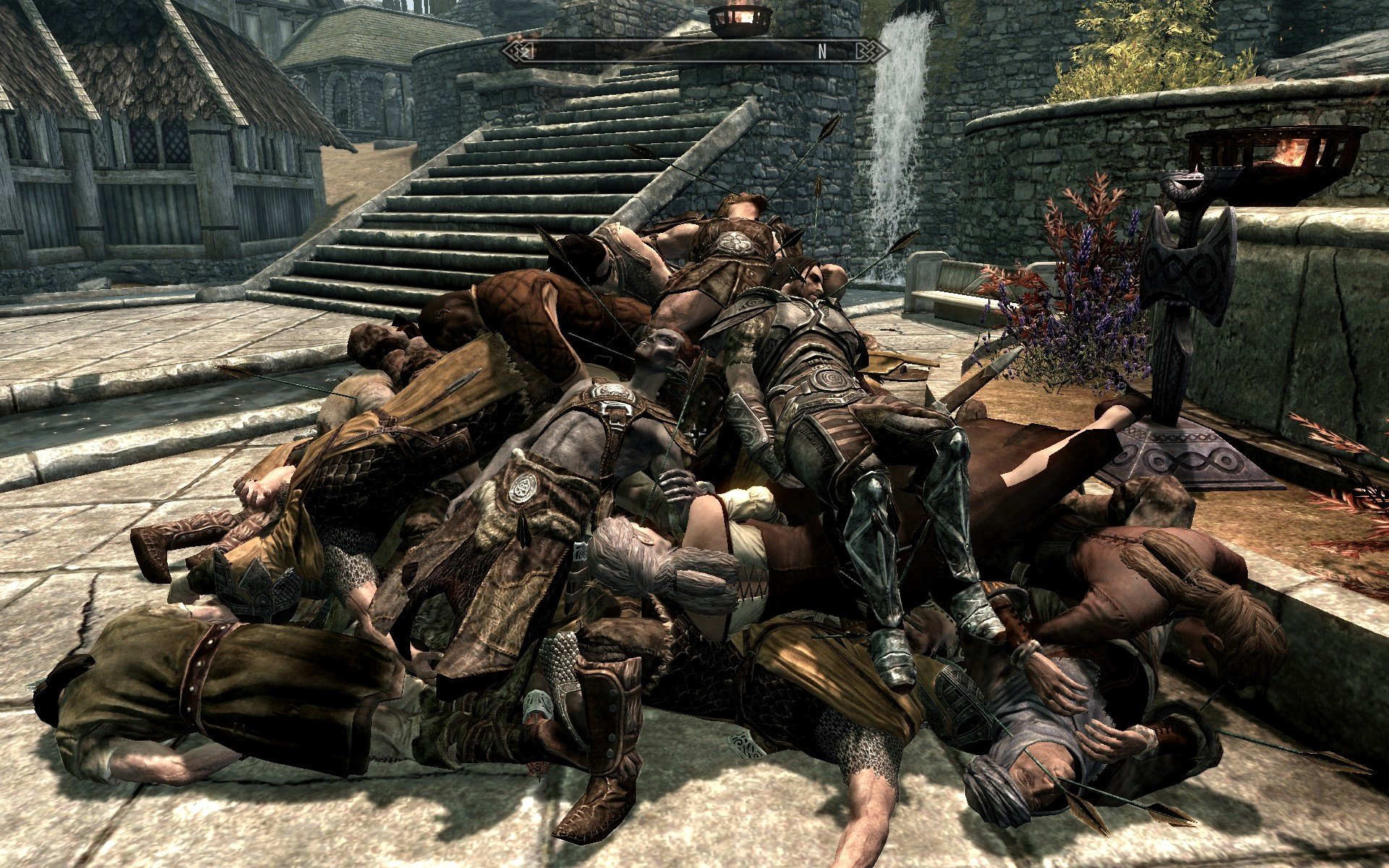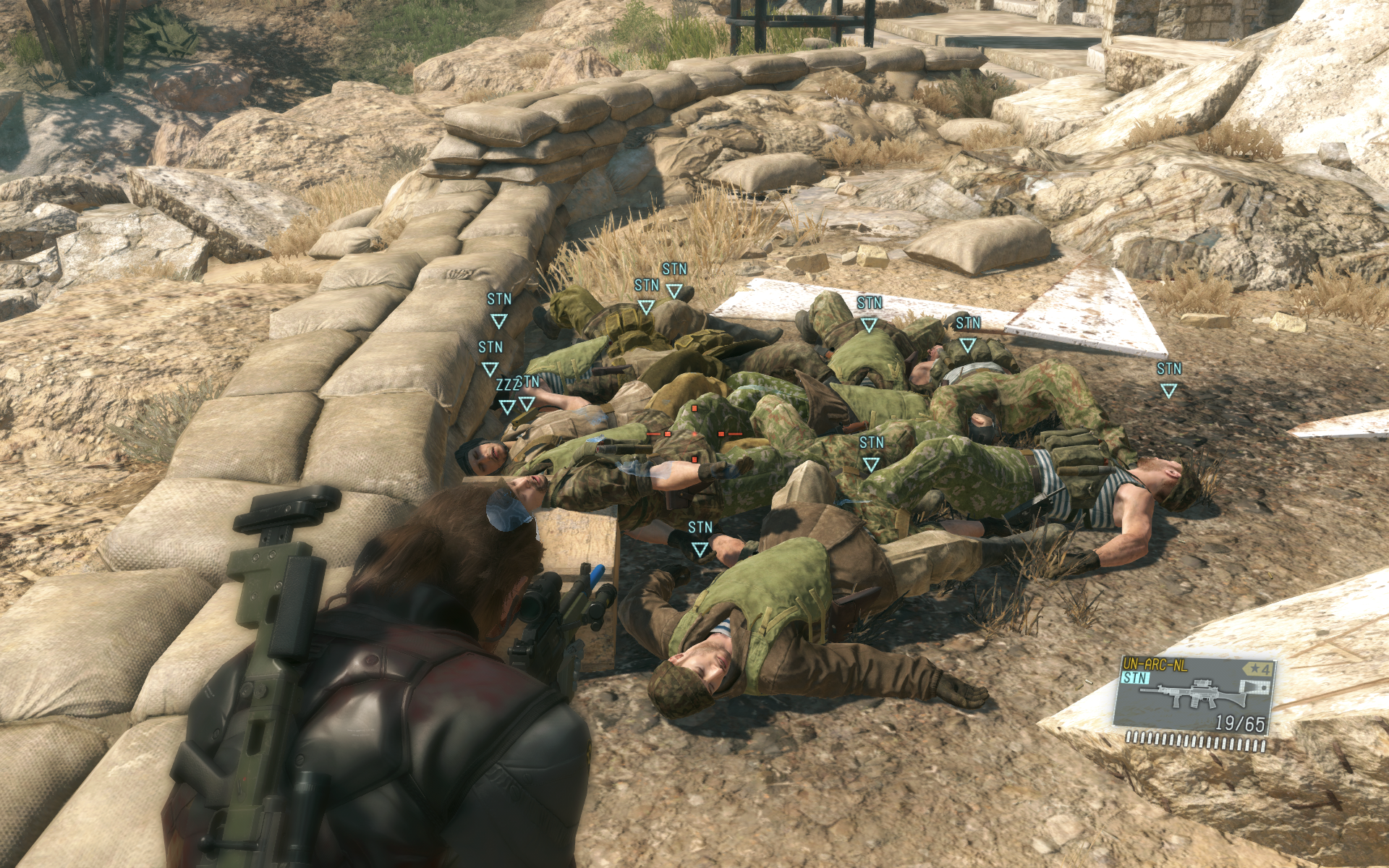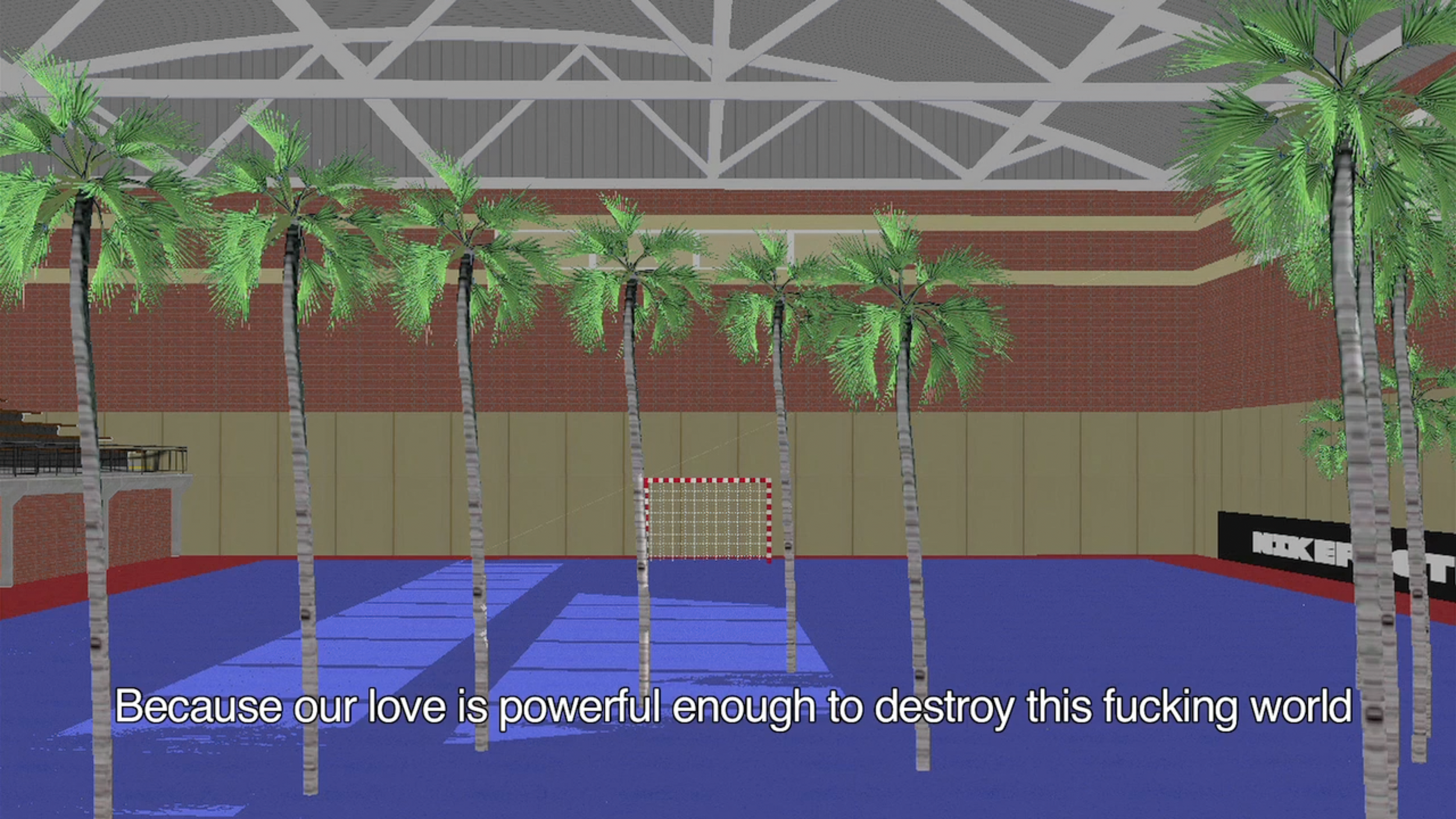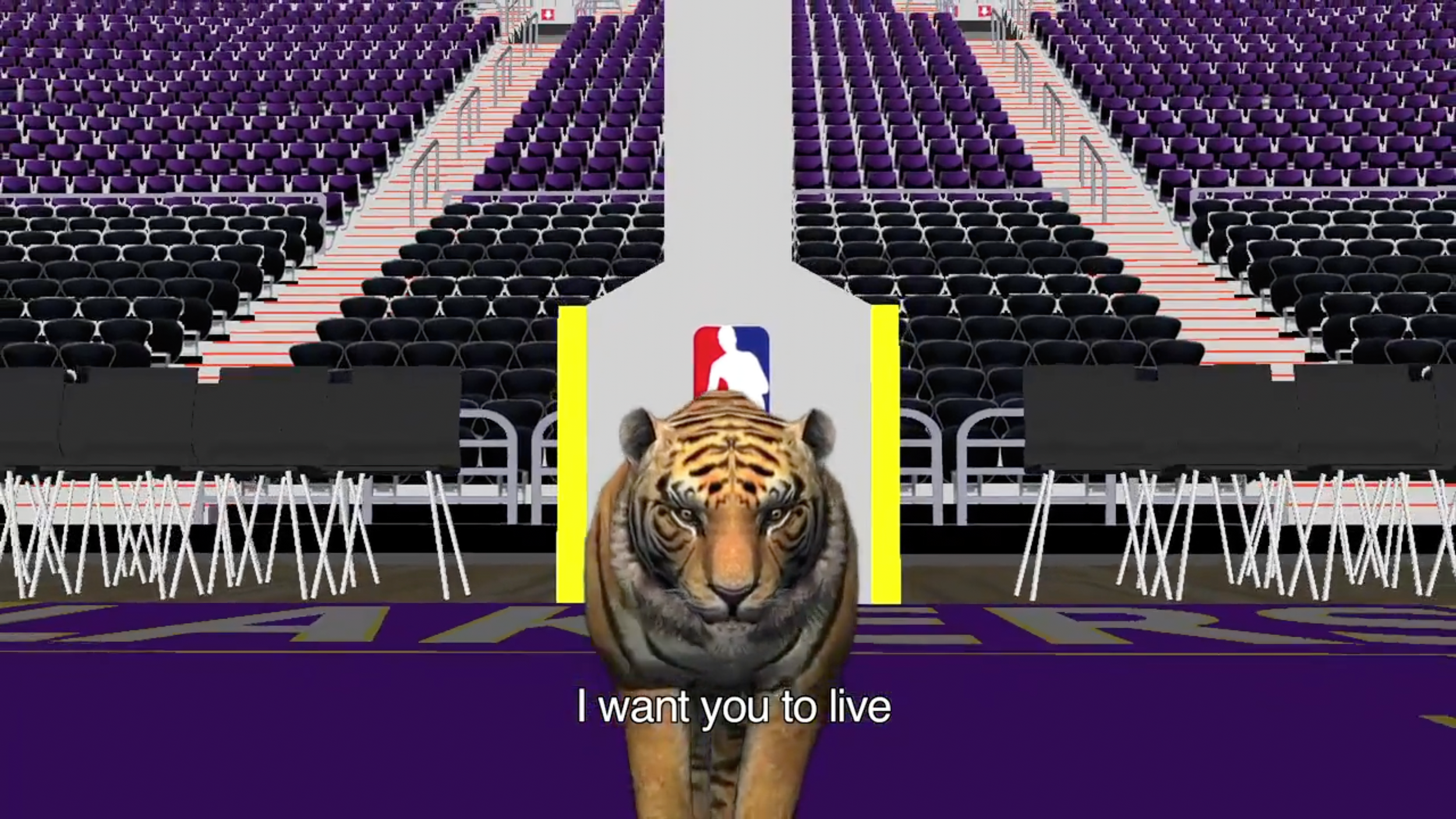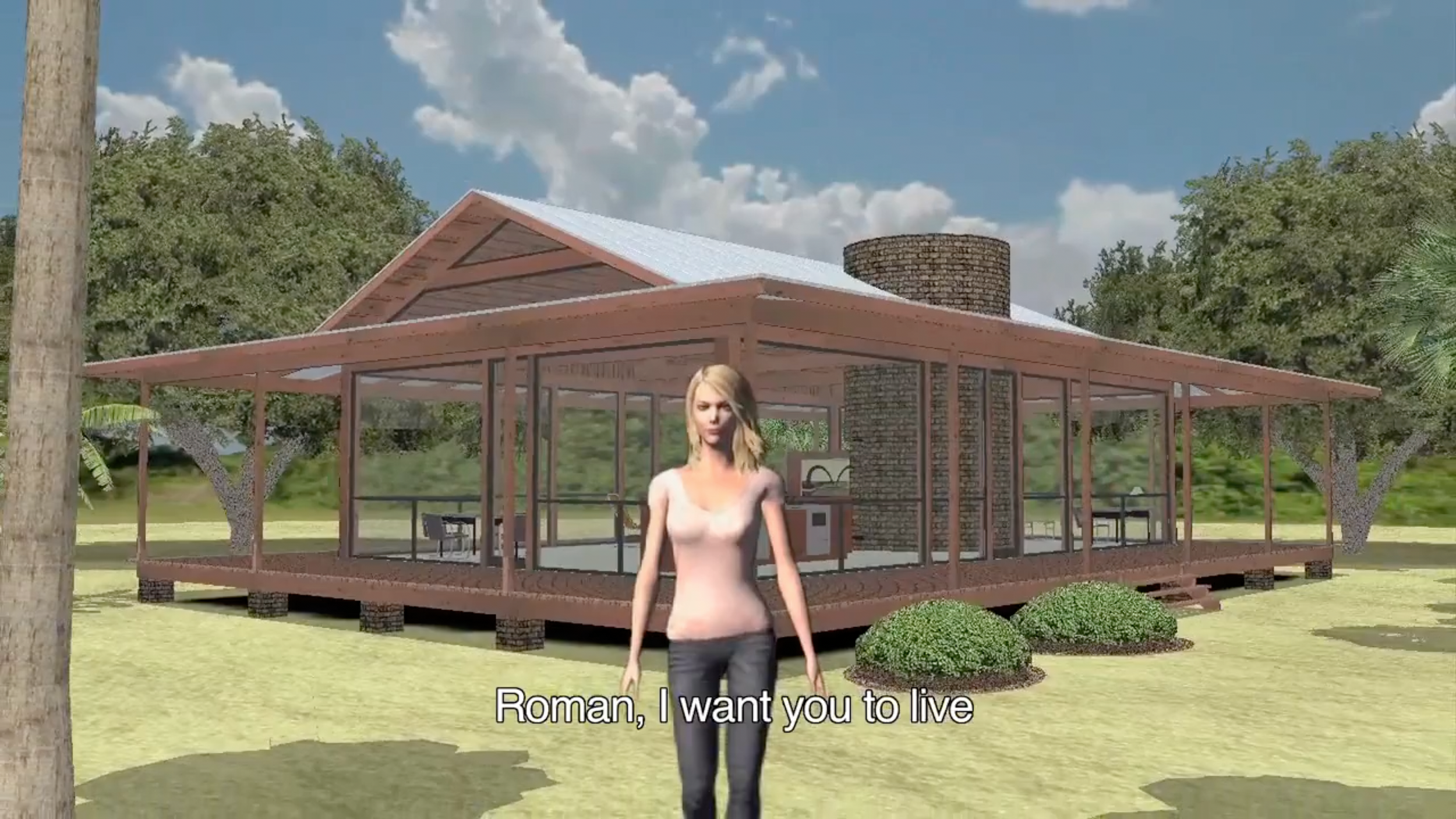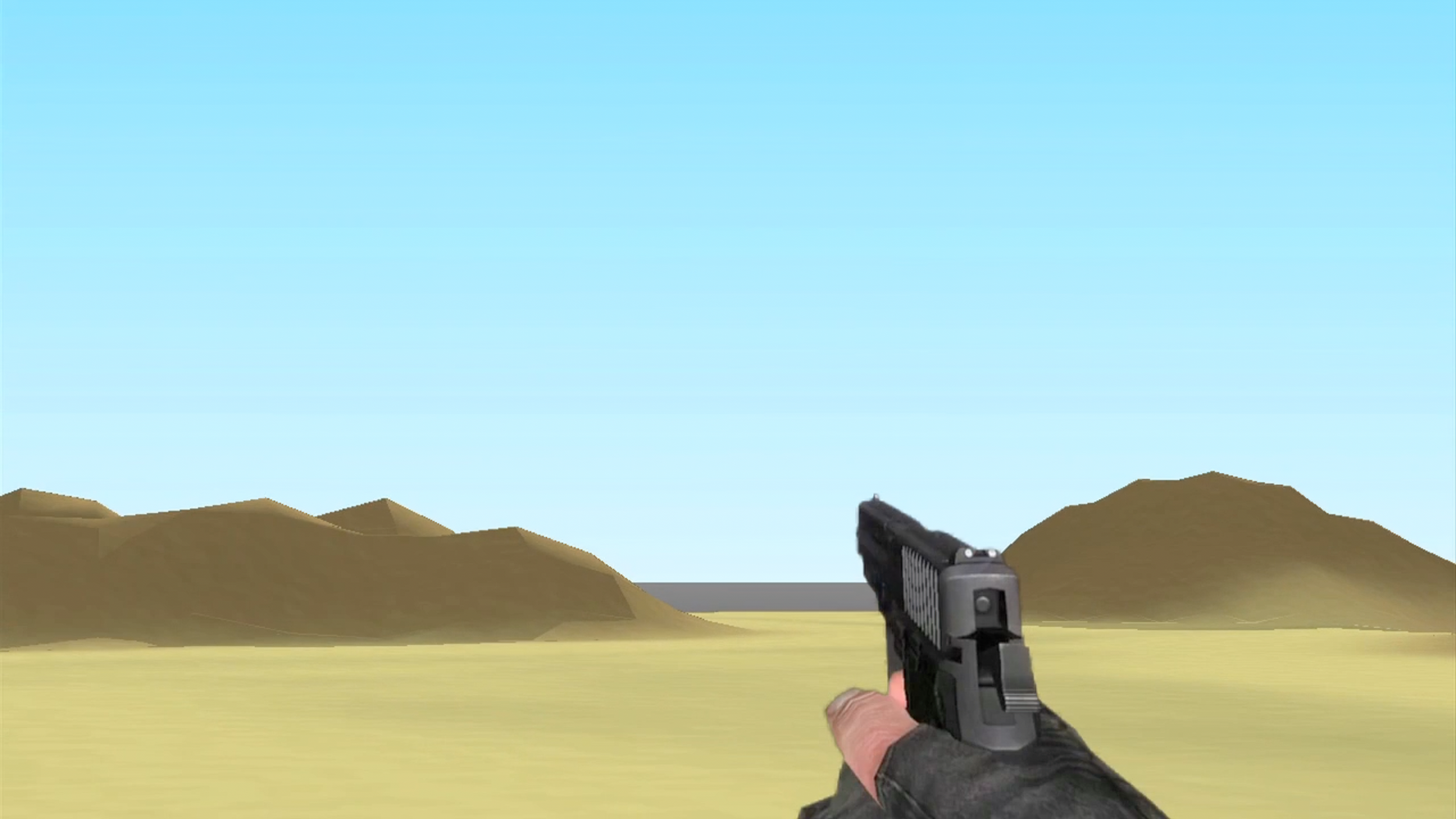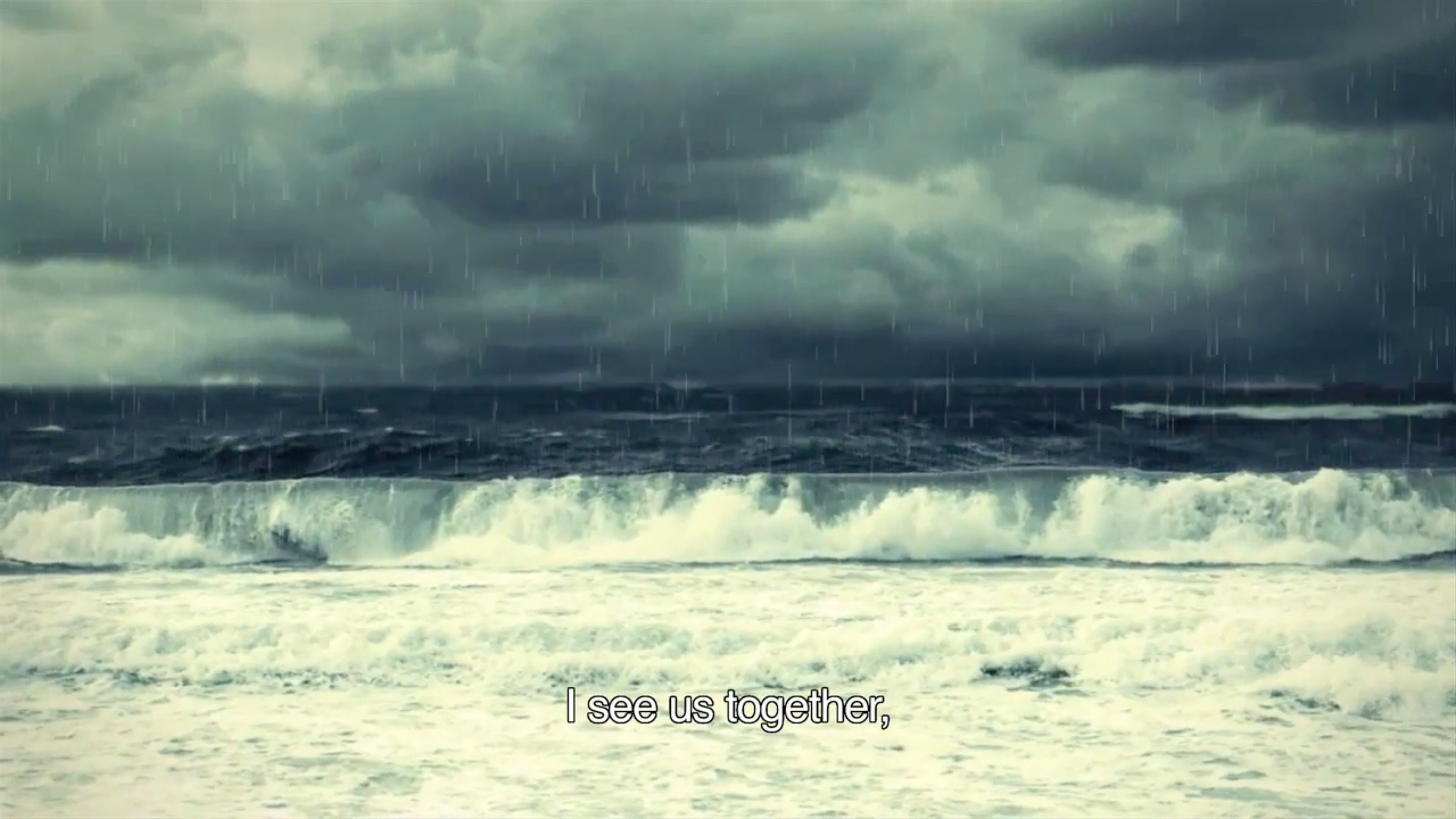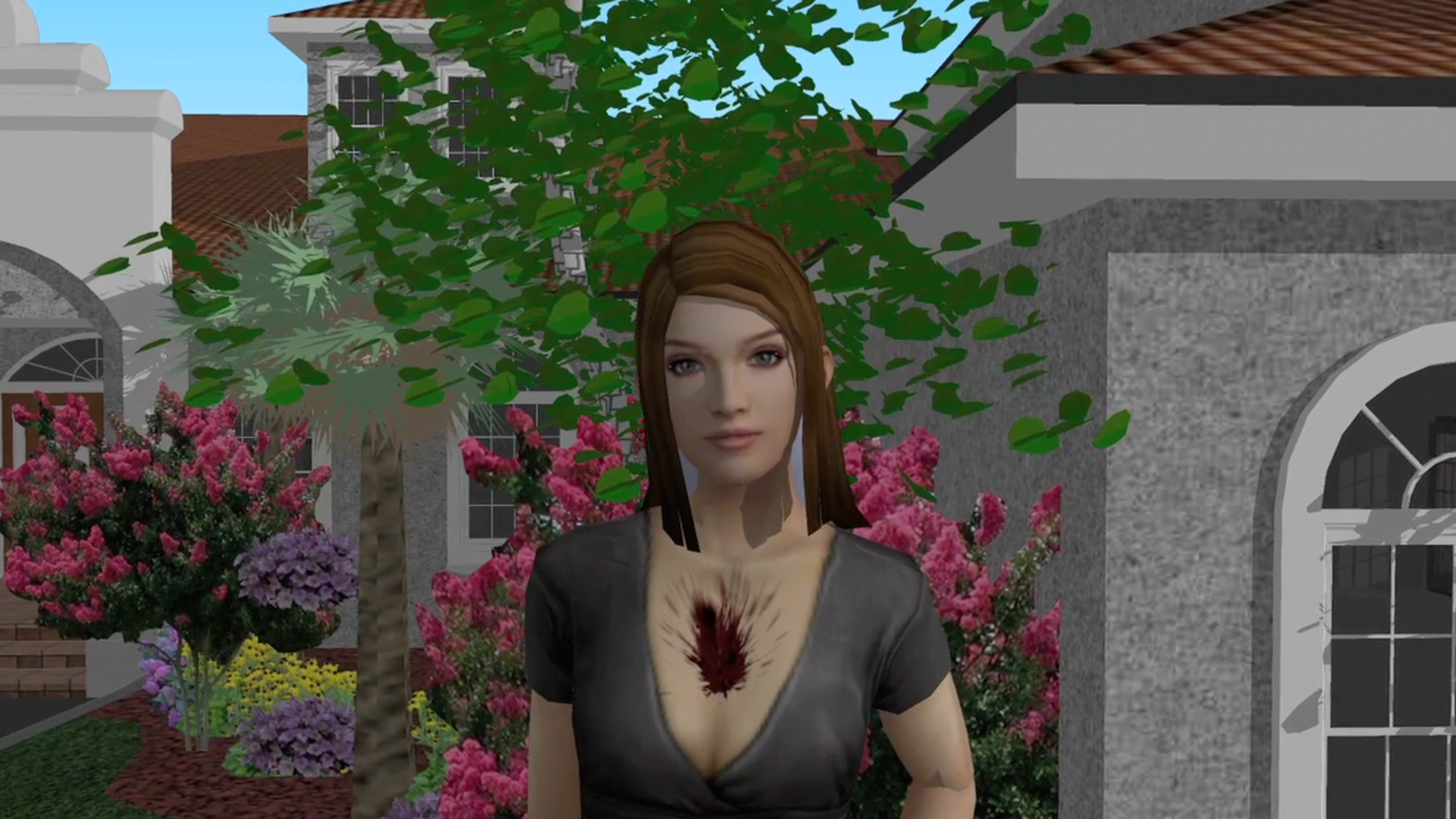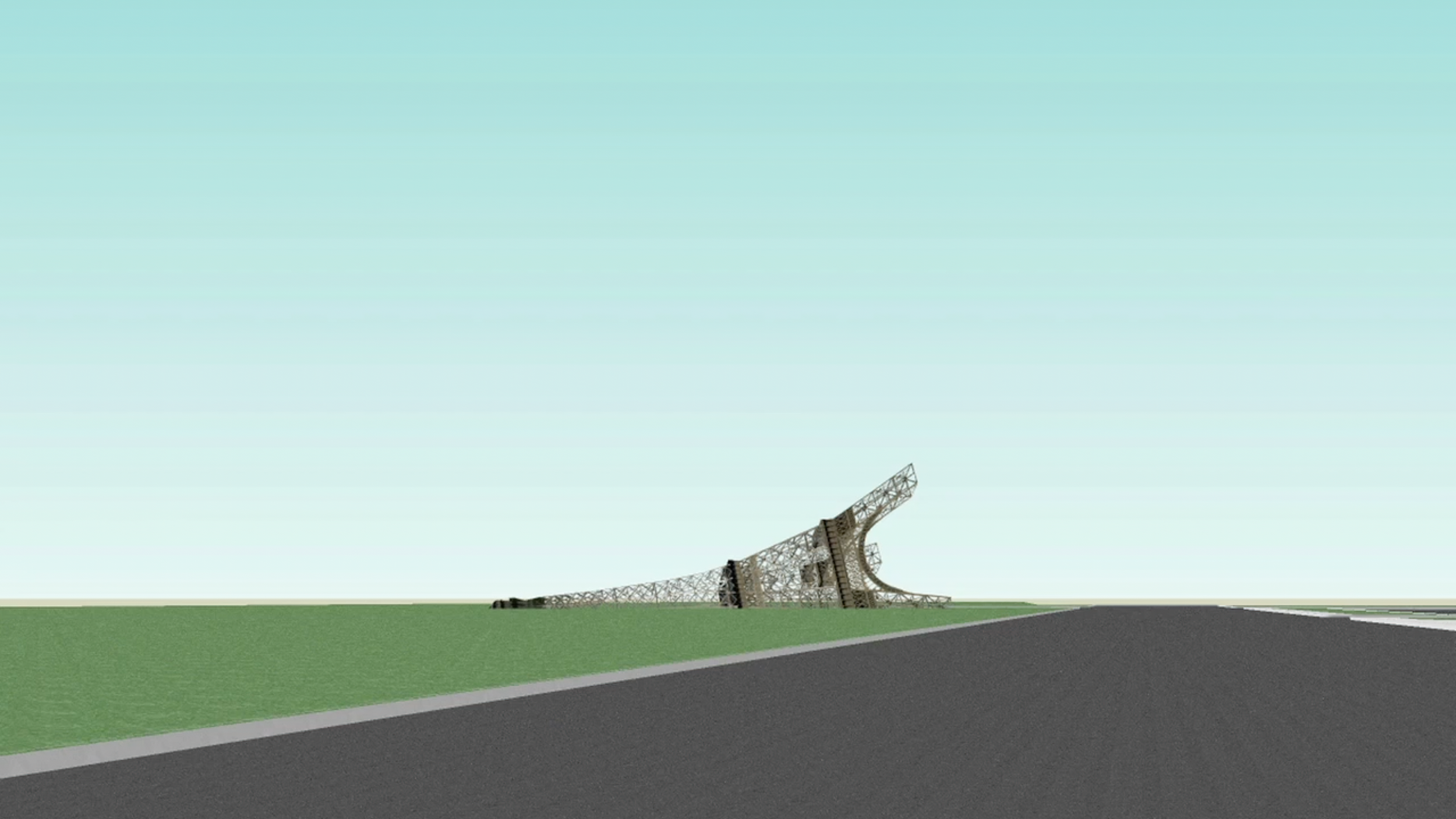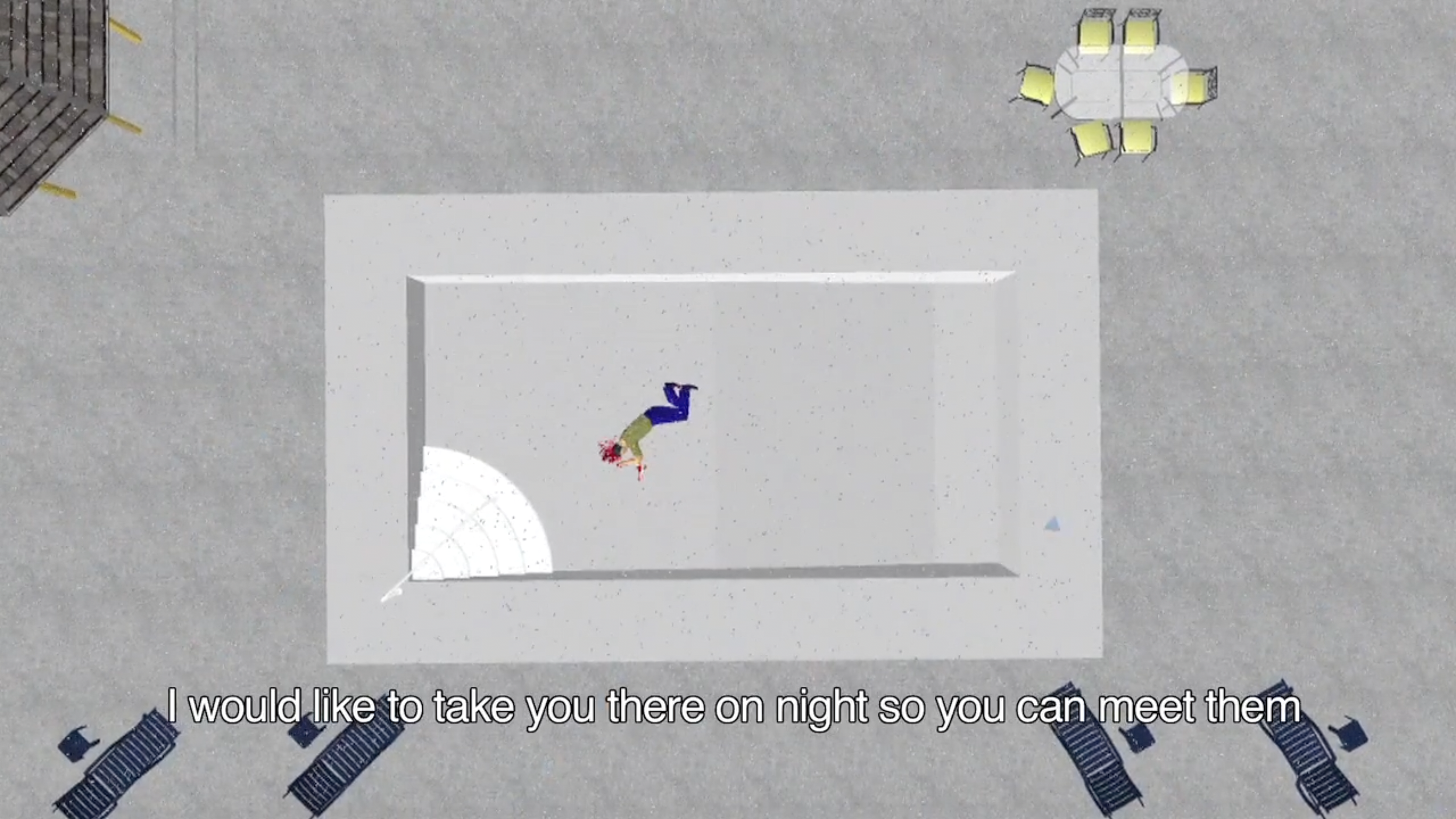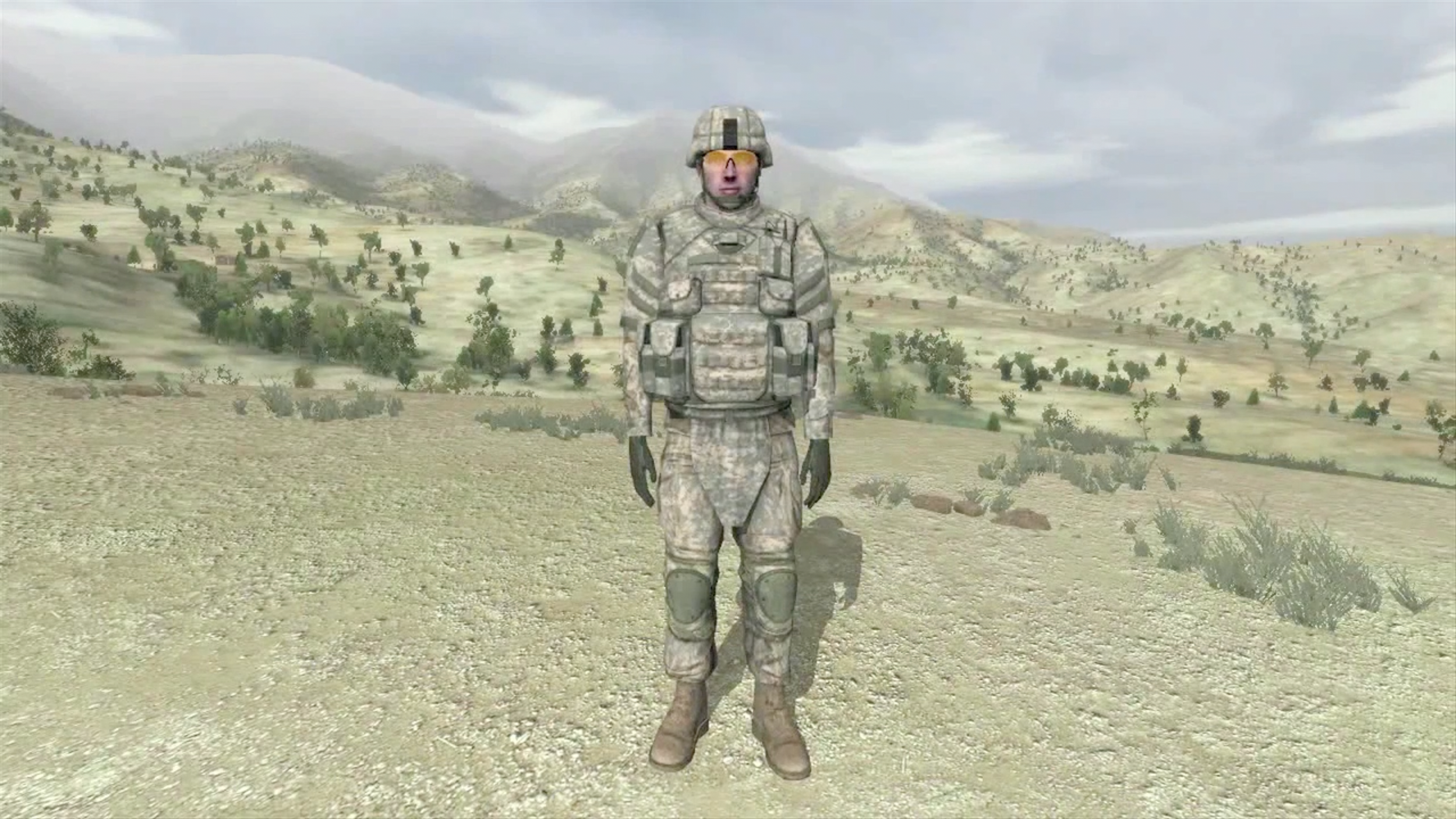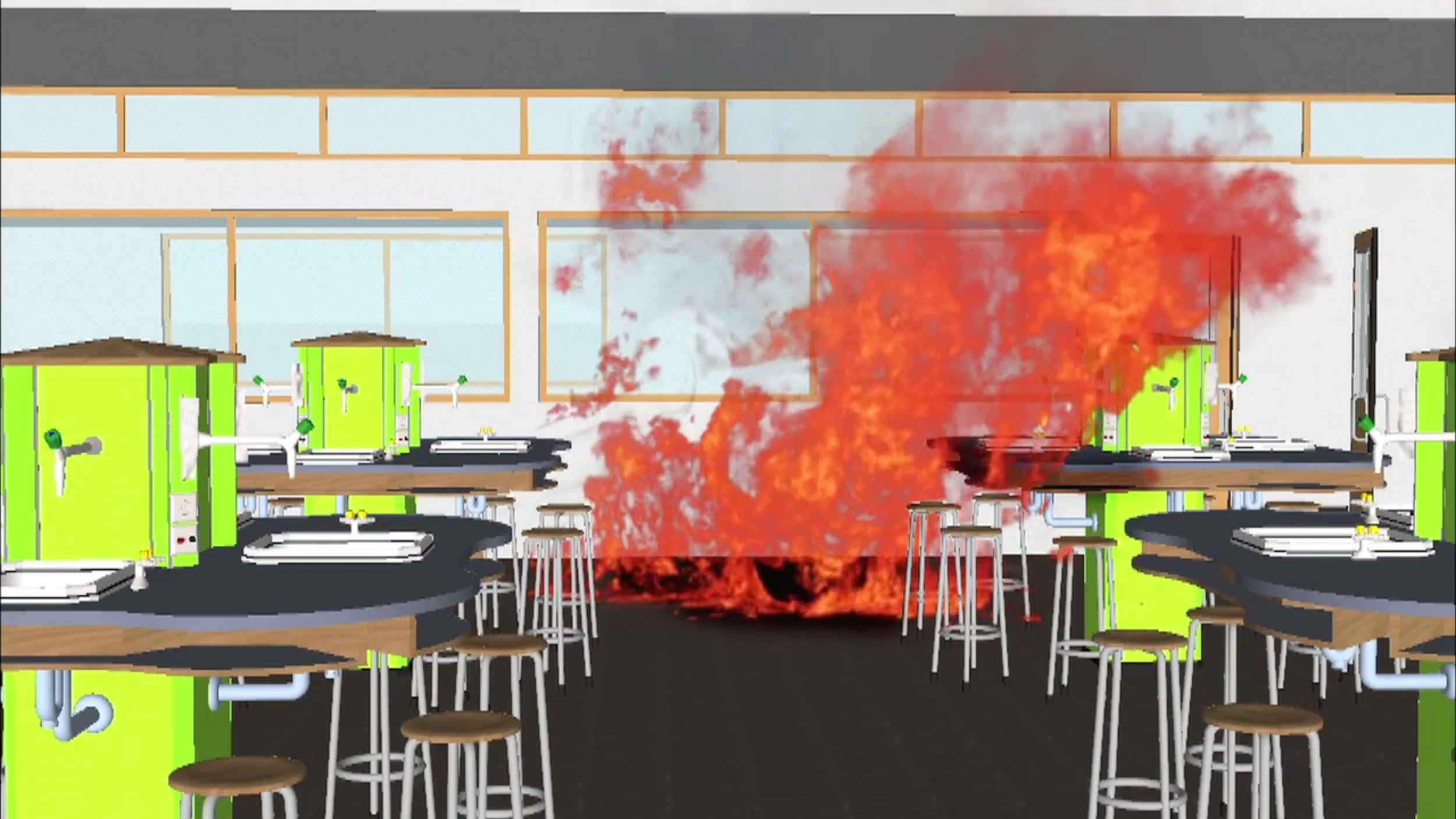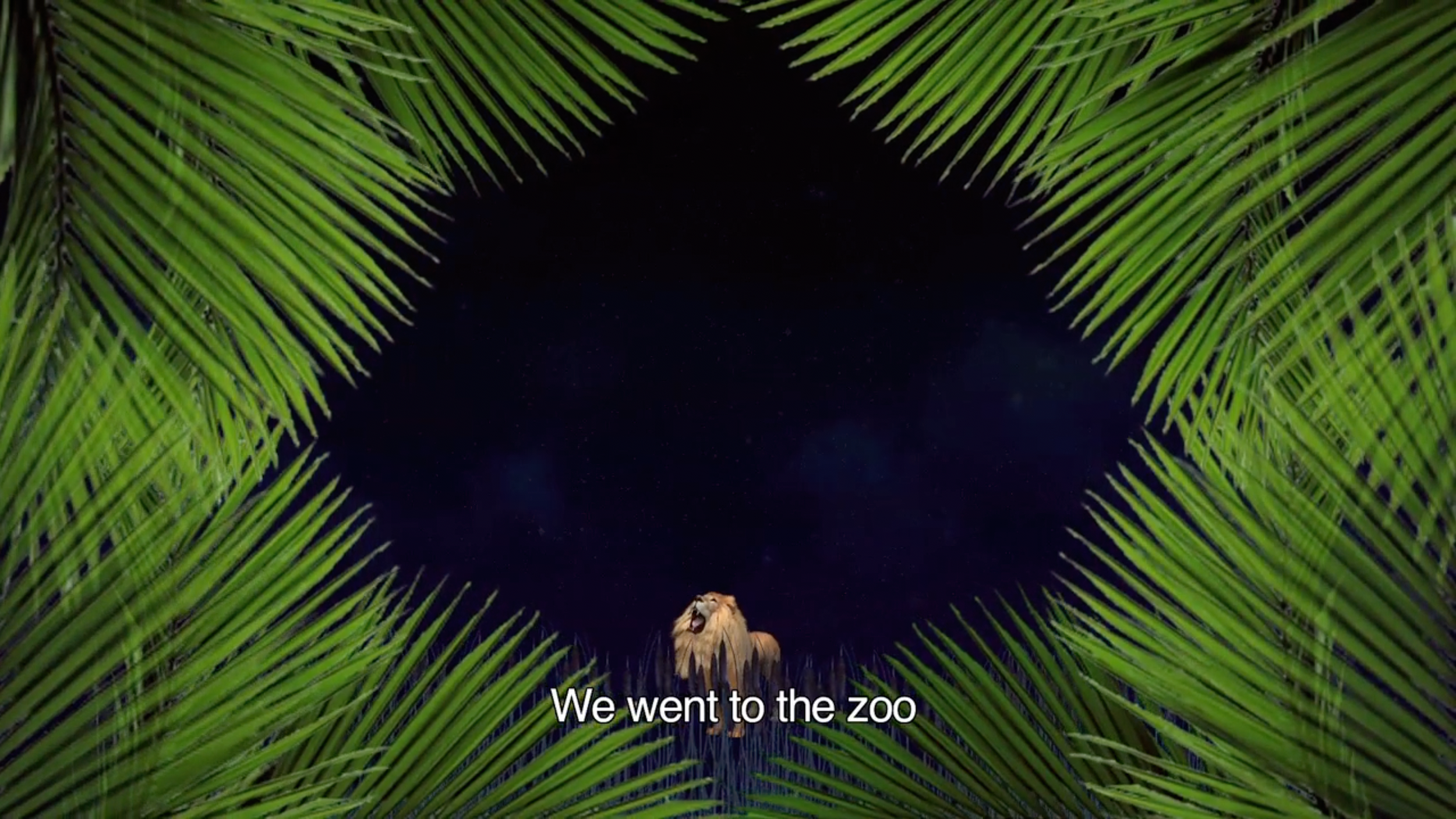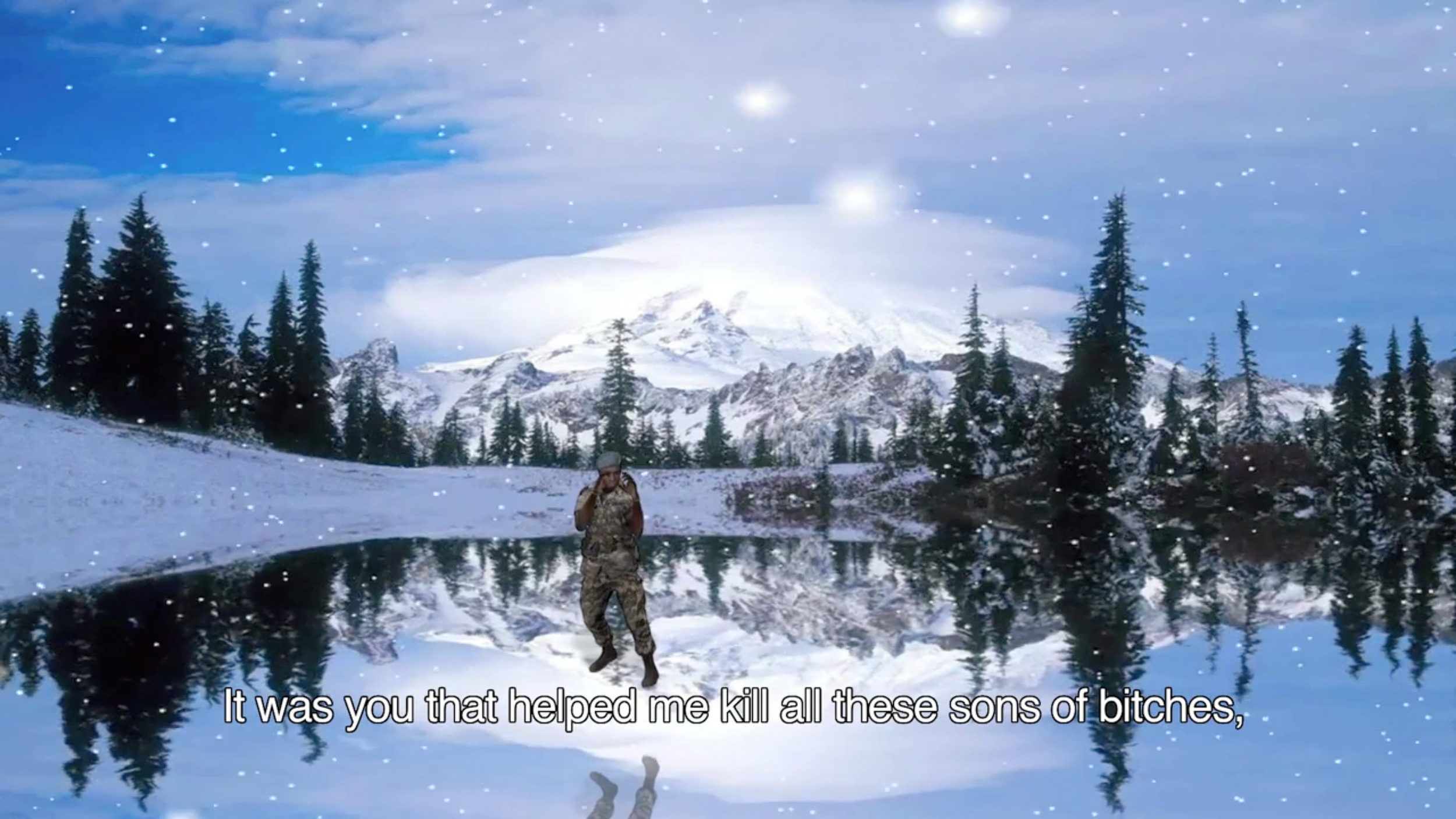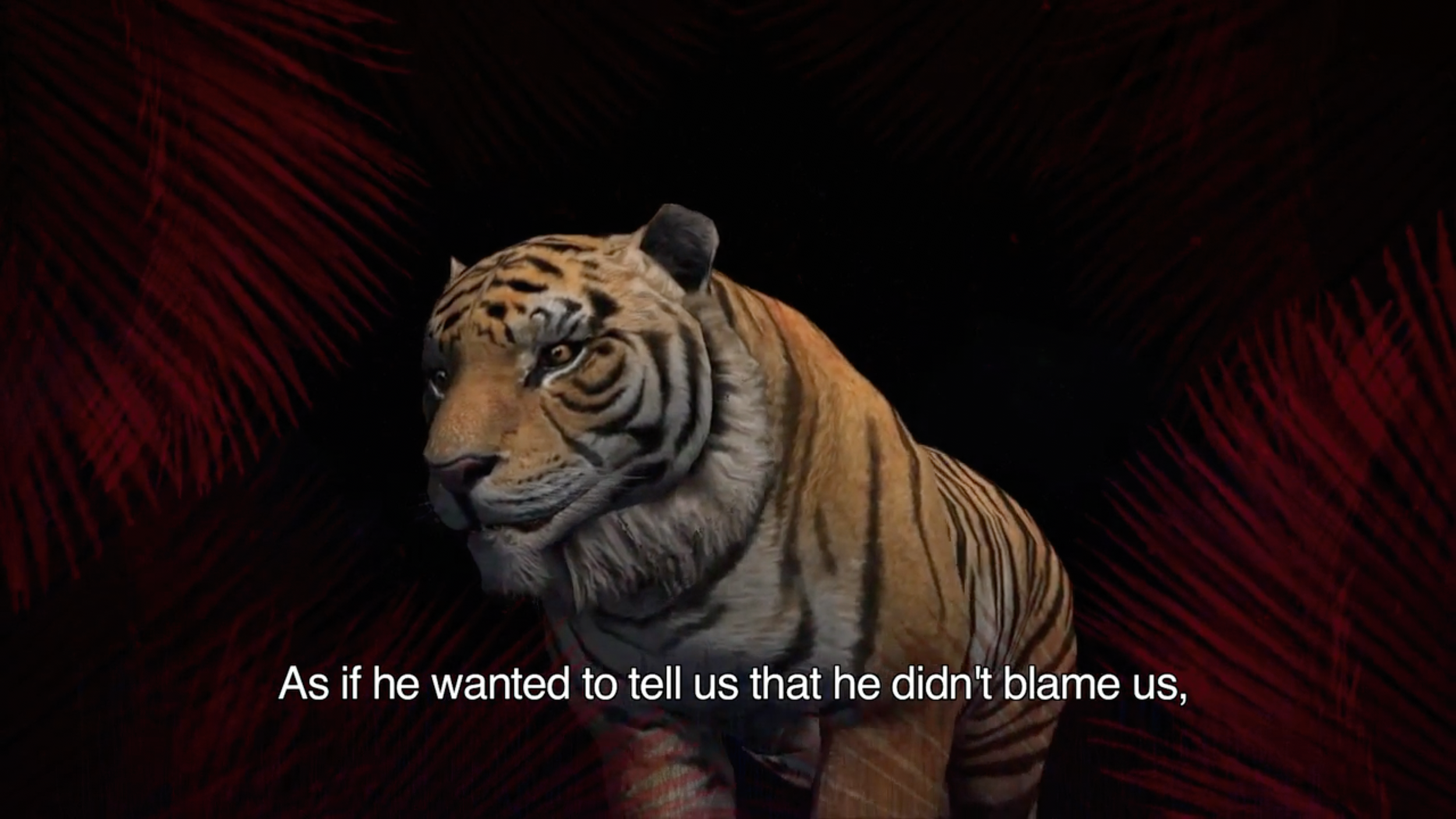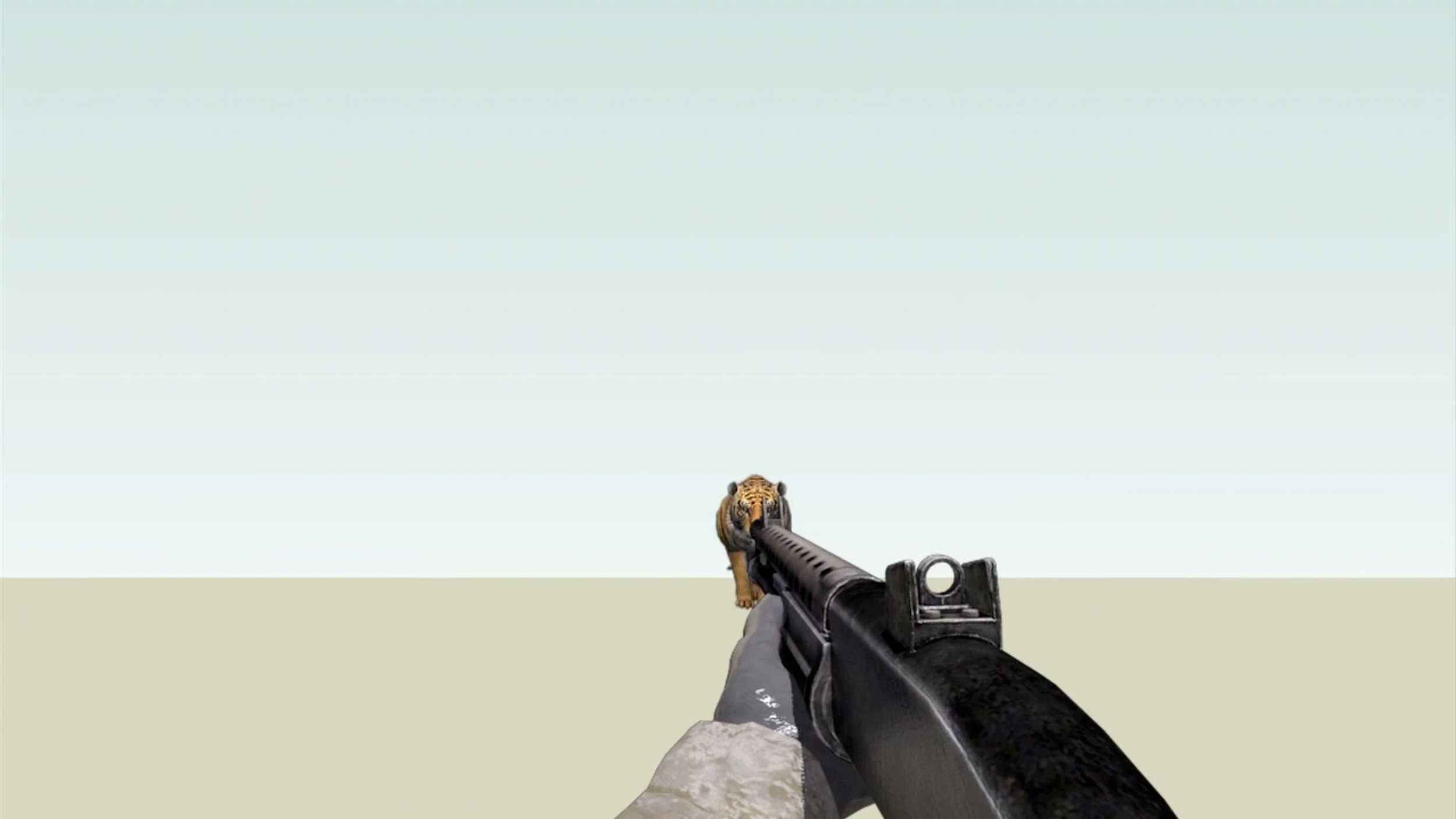The Milan Machinima Festival is thrilled to introduce Kinderfilm as part of our Auteur Theory program. Join us for a special screening on March 15 2024 at IULM University.
Kinderfilm, the latest creation of Austria collective Total Refusal (hereby represented by Adrian Jonas Haim, Michael Stumpf, Robin Klengel), unfolds within the digital spaces of Grand Theft Auto V’s San Andreas. The story centers on a middle aged man named Edgar, who drifts aimlessly through Los Santos and beyond, confined to his car. He’s unsettled by the mechanical, artificial nature of the world around him, where genuine human presence and children are conspicuously absent. This narrative engages with deep questions about the state and direction of a society overwhelmed by vehicles and crime, suggesting a critique of modern societal norms and the loss of human connections. Edgar’s journey takes a significant turn when he follows a yellow school bus, leading him to abandon his vehicle for the first time. This act brings him to the beach, symbolizing a stark contrast to the urban emptiness he leaves behind, and suggesting a possibility for renewal and discovery. Echoing both the aesthetics and concerns of filmmakers like Charlie Kaufman and Kristoffer Borgli, Total Refusal uses the familiar setting of Grand Theft Auto V to explore themes of societal critique and hope. By contrasting the game’s violent and chaotic themes with the innocence of children and the natural beauty of the beach, the film conveys a nuanced view of potential future directions, emphasizing the importance of reconnecting with fundamental human values.
Adrian Jonas Haim, a dynamic presence in Vienna and beyond, engages deeply in the intertwining realms of film and politics. His academic journey led him to the University of Applied Arts in Vienna, where he pursued studies in Political Science & Experimental Game Cultures. Haim’s diverse creative endeavors span writing, music, and art, all underscored by a keen focus on Marxist theory and the exploration of ideology within cross-media culture. His editorial insights previously enriched the pages of MALMOE Zeitung. As a programmer, he has curated film series that delve into the politics of remembrance, contributing to platforms such as Filmclub Tacheles, the Vienna Jewish Film Festival, and the This Human World Film Festival. In 2020, Haim brought his multifaceted expertise to the Total Refusal collective, furthering its mission to challenge and reinterpret media landscapes.
Robin Klengel operates at the nexus of art and cultural anthropology in Vienna and Graz, bringing a critical eye to the study of urban and digital environments. His academic background in cultural anthropology was honed in Graz and Berlin, equipping him with the tools to research, write, and teach within the sphere of artistic-scientific inquiry. Klengel’s work extends to filmmaking, textual analysis, and the delivery of lectures and courses that bridge the gap between theory and practice. Since 2021, he has served as co-chairman of Forum Stadtpark, an interdisciplinary art and culture space in Graz, demonstrating his commitment to fostering creative dialogue. His role in co-founding the Total Refusal collective in 2018 has been instrumental in shaping its direction and impact.
Michael Stumpf navigates the confluence of philosophy, media, and cultural semiotics with an analytical approach rooted in phenomenology. His studies in Philosophy in Vienna and Media Culture and Art Theories in Linz (unfinished) have provided a foundation for his exploration of popular cultural tropes and their significance. Stumpf’s work transcends disciplinary boundaries, manifesting in artistic endeavors, design projects, and coding, all aimed at interrogating the mechanics of media and culture. As a co-founder of the Total Refusal collective in 2018, Stumpf contributes to its mission with a unique blend of theoretical insight and practical expertise, challenging conventional interpretations of media narratives.
Read more about the 7th edition of the Milan Machinima Festival


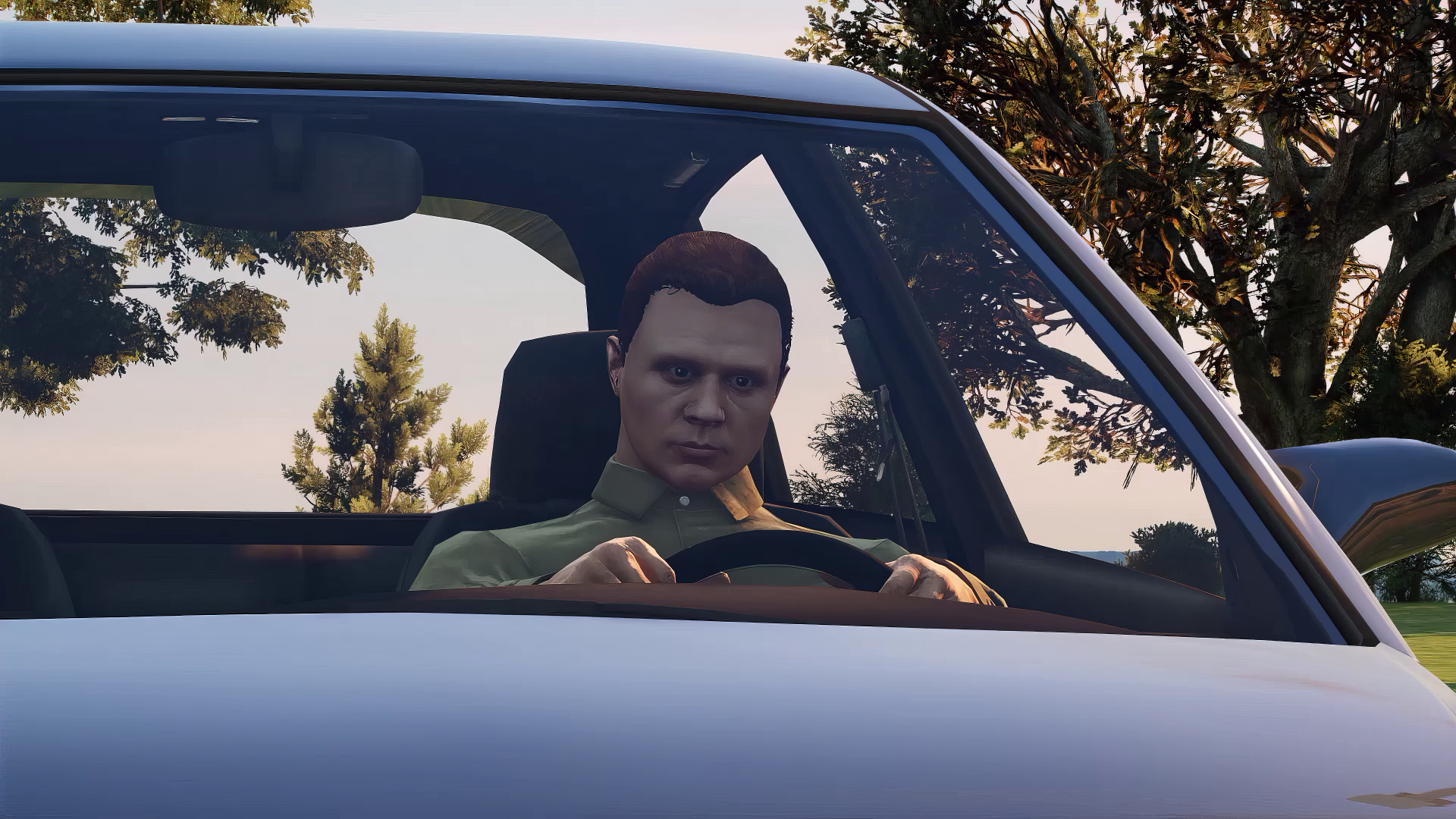
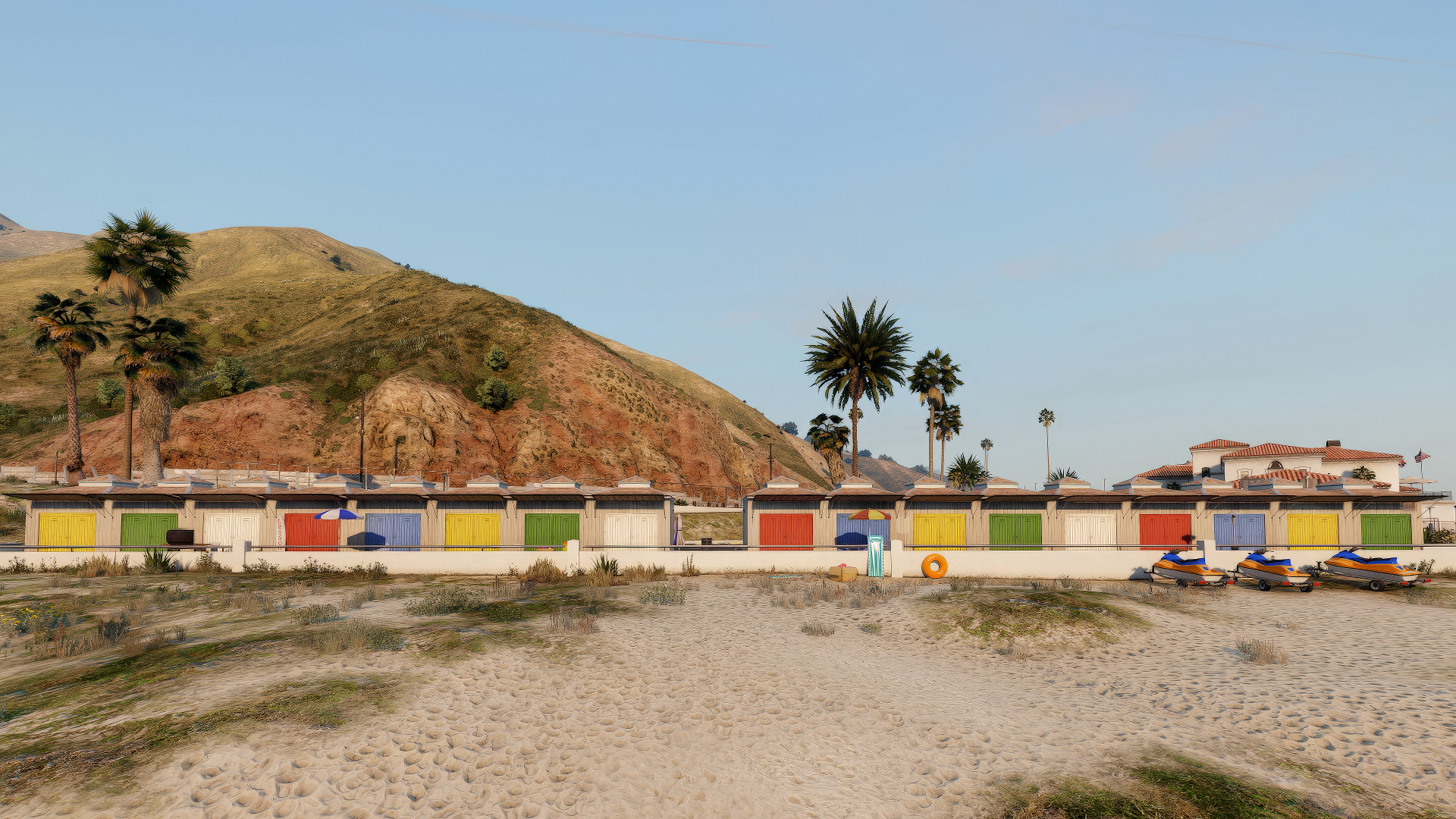
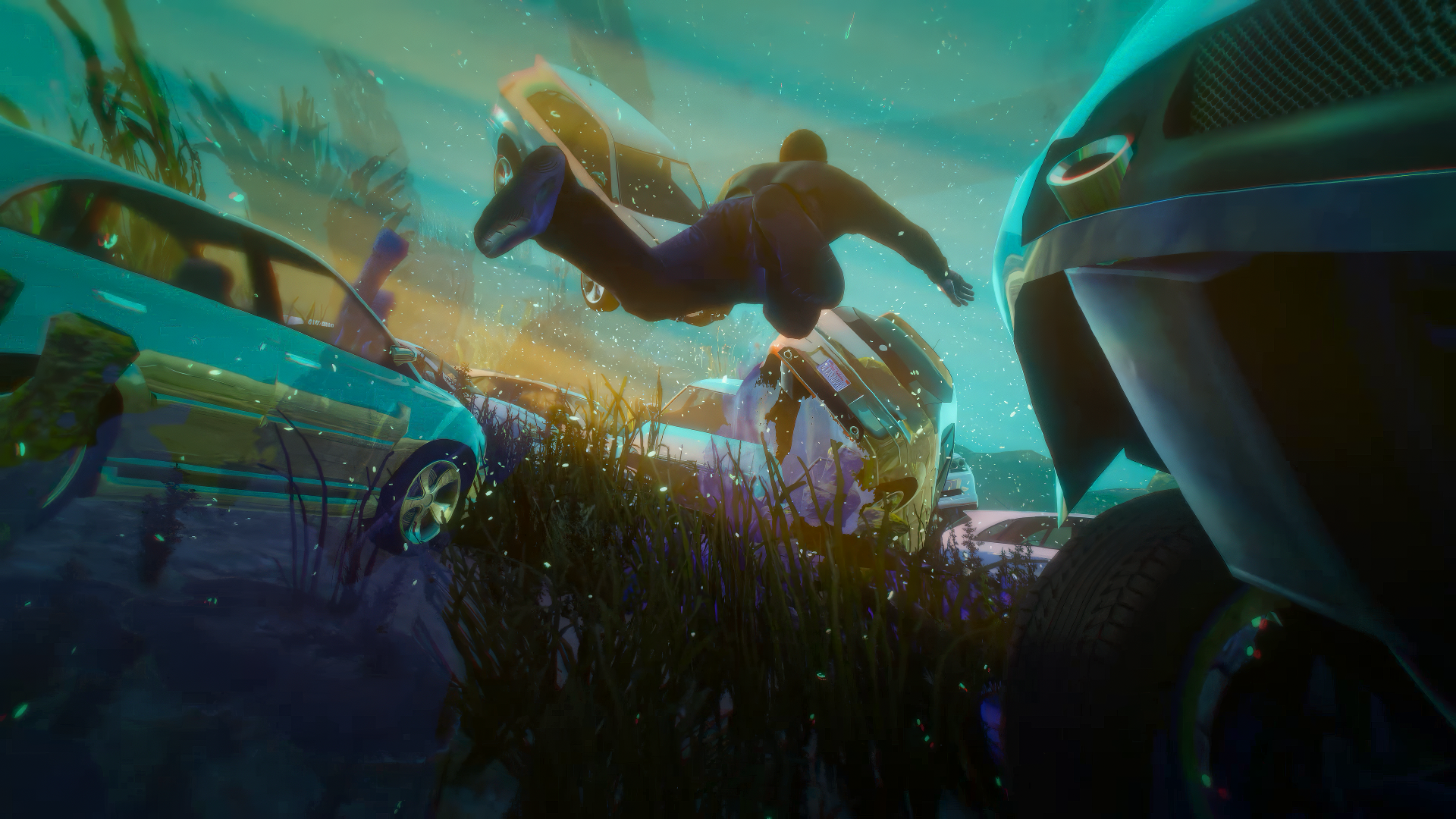
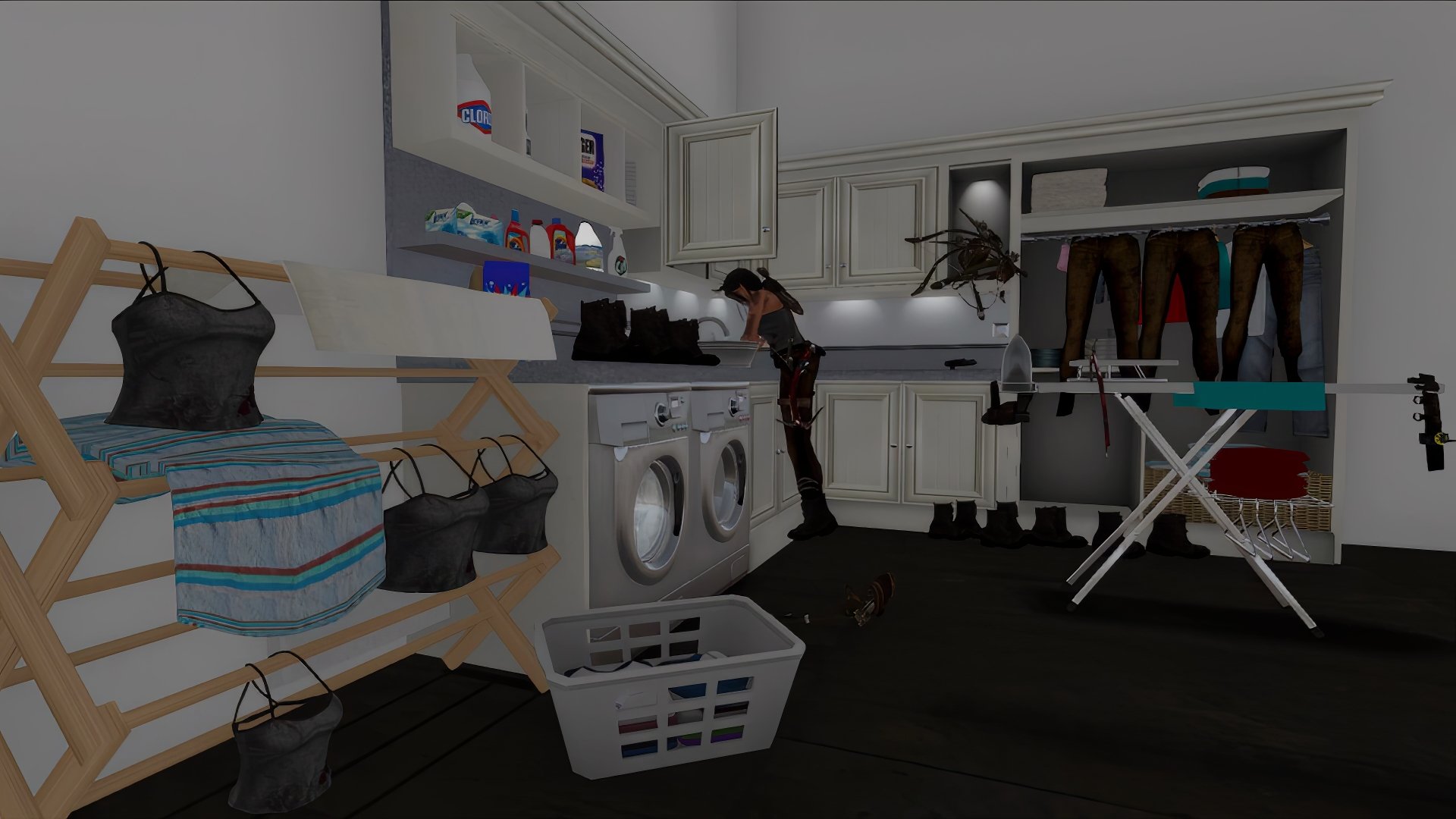


![George Roxby Smith, Fair Game [Run like a girl] , in-game performance, machinima (color, sound, 13' 56"), 2015](https://images.squarespace-cdn.com/content/v1/5a92a15fcef372c749ca0487/1707601223248-1BKXK9BXW7QWPV4QEM9P/run+like+a+girl1.png)
![George Roxby Smith, Fair Game [Run like a girl] , in-game performance, machinima (color, sound, 13' 56"), 2015](https://images.squarespace-cdn.com/content/v1/5a92a15fcef372c749ca0487/1707601223911-EEQIQFP8HITWQ64KVIAA/run+like+a+girl0.png)
![George Roxby Smith, Fair Game [Run like a girl] , in-game performance, machinima (color, sound, 13' 56"), 2015](https://images.squarespace-cdn.com/content/v1/5a92a15fcef372c749ca0487/1707601224615-ZHD2C5C5O2UE82G42DUN/run+like+a+girl7.png)
![George Roxby Smith, Fair Game [Run like a girl] , in-game performance, machinima (color, sound, 13' 56"), 2015](https://images.squarespace-cdn.com/content/v1/5a92a15fcef372c749ca0487/1707601225483-DK99UXSU3S2WZH6K22V0/run+like+a+girl6.png)
![George Roxby Smith, Fair Game [Run like a girl] , in-game performance, machinima (color, sound, 13' 56"), 2015](https://images.squarespace-cdn.com/content/v1/5a92a15fcef372c749ca0487/1707601226817-I97WHMBC75ZYTX19ST7G/run+like+a+girl2.png)
![George Roxby Smith, Fair Game [Run like a girl] , in-game performance, machinima (color, sound, 13' 56"), 2015](https://images.squarespace-cdn.com/content/v1/5a92a15fcef372c749ca0487/1707601227601-1K7F5QYE0LAMHEIVICGK/run+like+a+girl4.png)
![George Roxby Smith, Fair Game [Run like a girl] , in-game performance, machinima (color, sound, 13' 56"), 2015](https://images.squarespace-cdn.com/content/v1/5a92a15fcef372c749ca0487/1707601228132-UGLL56PYRS5C0KQEQ0TW/run+like+a+girl3.png)
![George Roxby Smith, 99 Problems [WASTED] , in-game performance, machinima (color, sound, 4' 45"), 2014](https://images.squarespace-cdn.com/content/v1/5a92a15fcef372c749ca0487/1707481097134-Q9K31ND3GTC16YGOLLJX/Roxby+Smith_99problems_15.png)
![George Roxby Smith, 99 Problems [WASTED] , in-game performance, machinima (color, sound, 4' 45"), 2014](https://images.squarespace-cdn.com/content/v1/5a92a15fcef372c749ca0487/1707481101079-3560FNG2Z8RN1S3LQGLA/Roxby+Smith_99problems_16.png)
![George Roxby Smith, 99 Problems [WASTED] , in-game performance, machinima (color, sound, 4' 45"), 2014](https://images.squarespace-cdn.com/content/v1/5a92a15fcef372c749ca0487/1707481099696-UZ7U3ZUL2UX4ARZLI3UL/Roxby+Smith_99problems_3.png)
![George Roxby Smith, 99 Problems [WASTED] , in-game performance, machinima (color, sound, 4' 45"), 2014](https://images.squarespace-cdn.com/content/v1/5a92a15fcef372c749ca0487/1707481088316-D58VZM5S8RFLEFENOOUZ/Roxby+Smith_99problems_23.jpeg)
![George Roxby Smith, 99 Problems [WASTED] , in-game performance, machinima (color, sound, 4' 45"), 2014](https://images.squarespace-cdn.com/content/v1/5a92a15fcef372c749ca0487/1707481090030-RMVV55A34LDM3VAXL6PN/Roxby+Smith_99problems_24.jpeg)
![George Roxby Smith, 99 Problems [WASTED] , in-game performance, machinima (color, sound, 4' 45"), 2014](https://images.squarespace-cdn.com/content/v1/5a92a15fcef372c749ca0487/1707481090826-KGRC5WF2TFB8S9MQ5564/Roxby+Smith_99problems_25.jpeg)
![George Roxby Smith, 99 Problems [WASTED] , in-game performance, machinima (color, sound, 4' 45"), 2014](https://images.squarespace-cdn.com/content/v1/5a92a15fcef372c749ca0487/1707481092619-I8S0P9MJUC52T4RSUKQO/Roxby+Smith_99problems_21.jpeg)
![George Roxby Smith, 99 Problems [WASTED] , in-game performance, machinima (color, sound, 4' 45"), 2014](https://images.squarespace-cdn.com/content/v1/5a92a15fcef372c749ca0487/1707481094660-M0V0C0TBPHY3LIWETTAI/Roxby+Smith_99problems_22.jpeg)
![George Roxby Smith, 99 Problems [WASTED] , in-game performance, machinima (color, sound, 4' 45"), 2014](https://images.squarespace-cdn.com/content/v1/5a92a15fcef372c749ca0487/1707481091786-33OF5VKN0J74HW7EJ147/Roxby+Smith_99problems_26.jpeg)
![George Roxby Smith, 99 Problems [WASTED] , in-game performance, machinima (color, sound, 4' 45"), 2014](https://images.squarespace-cdn.com/content/v1/5a92a15fcef372c749ca0487/1707481095812-WZ8PQG26MGQ2R2FFL911/Roxby+Smith_99problems_2.png)
![George Roxby Smith, 99 Problems [WASTED] , in-game performance, machinima (color, sound, 4' 45"), 2014](https://images.squarespace-cdn.com/content/v1/5a92a15fcef372c749ca0487/1707481098359-EHIS9H1BBAJ4QCJM42H5/Roxby+Smith_99problems_9.png)
![George Roxby Smith, 99 Problems [WASTED] , in-game performance, machinima (color, sound, 4' 45"), 2014](https://images.squarespace-cdn.com/content/v1/5a92a15fcef372c749ca0487/1707481139980-8CSQ1YXZL1U3H52IV8ZU/Roxby+Smith_99problems_17.png)
![George Roxby Smith, 99 Problems [WASTED] , in-game performance, machinima (color, sound, 4' 45"), 2014](https://images.squarespace-cdn.com/content/v1/5a92a15fcef372c749ca0487/1707481146060-46QTDPW5H88CV5GEVTTO/Roxby+Smith_99problems_12.png)
![George Roxby Smith, 99 Problems [WASTED] , in-game performance, machinima (color, sound, 4' 45"), 2014](https://images.squarespace-cdn.com/content/v1/5a92a15fcef372c749ca0487/1707481145259-LMH3BGZABOBU3HEJJE5J/Roxby+Smith_99problems_10.png)
![George Roxby Smith, 99 Problems [WASTED] , in-game performance, machinima (color, sound, 4' 45"), 2014](https://images.squarespace-cdn.com/content/v1/5a92a15fcef372c749ca0487/1707481102838-5KBD9ZNGTATJML1N2AR0/Roxby+Smith_99problems_18.png)
![George Roxby Smith, 99 Problems [WASTED] , in-game performance, machinima (color, sound, 4' 45"), 2014](https://images.squarespace-cdn.com/content/v1/5a92a15fcef372c749ca0487/1707481103944-HE2U036ICLWRLCALKBD4/Roxby+Smith_99problems_13.png)
![George Roxby Smith, 99 Problems [WASTED] , in-game performance, machinima (color, sound, 4' 45"), 2014](https://images.squarespace-cdn.com/content/v1/5a92a15fcef372c749ca0487/1707481105933-2W6F8YDC1GTR51AOZDGY/Roxby+Smith_99problems_14.png)
![George Roxby Smith, 99 Problems [WASTED] , in-game performance, machinima (color, sound, 4' 45"), 2014](https://images.squarespace-cdn.com/content/v1/5a92a15fcef372c749ca0487/1707481140475-VC4Q9ERH73Q24832WTHD/Roxby+Smith_99problems_0.png)
![George Roxby Smith, 99 Problems [WASTED] , in-game performance, machinima (color, sound, 4' 45"), 2014](https://images.squarespace-cdn.com/content/v1/5a92a15fcef372c749ca0487/1707481148477-4UEBN9J2TTT2RLLHAS7N/Roxby+Smith_99problems_11.png)

